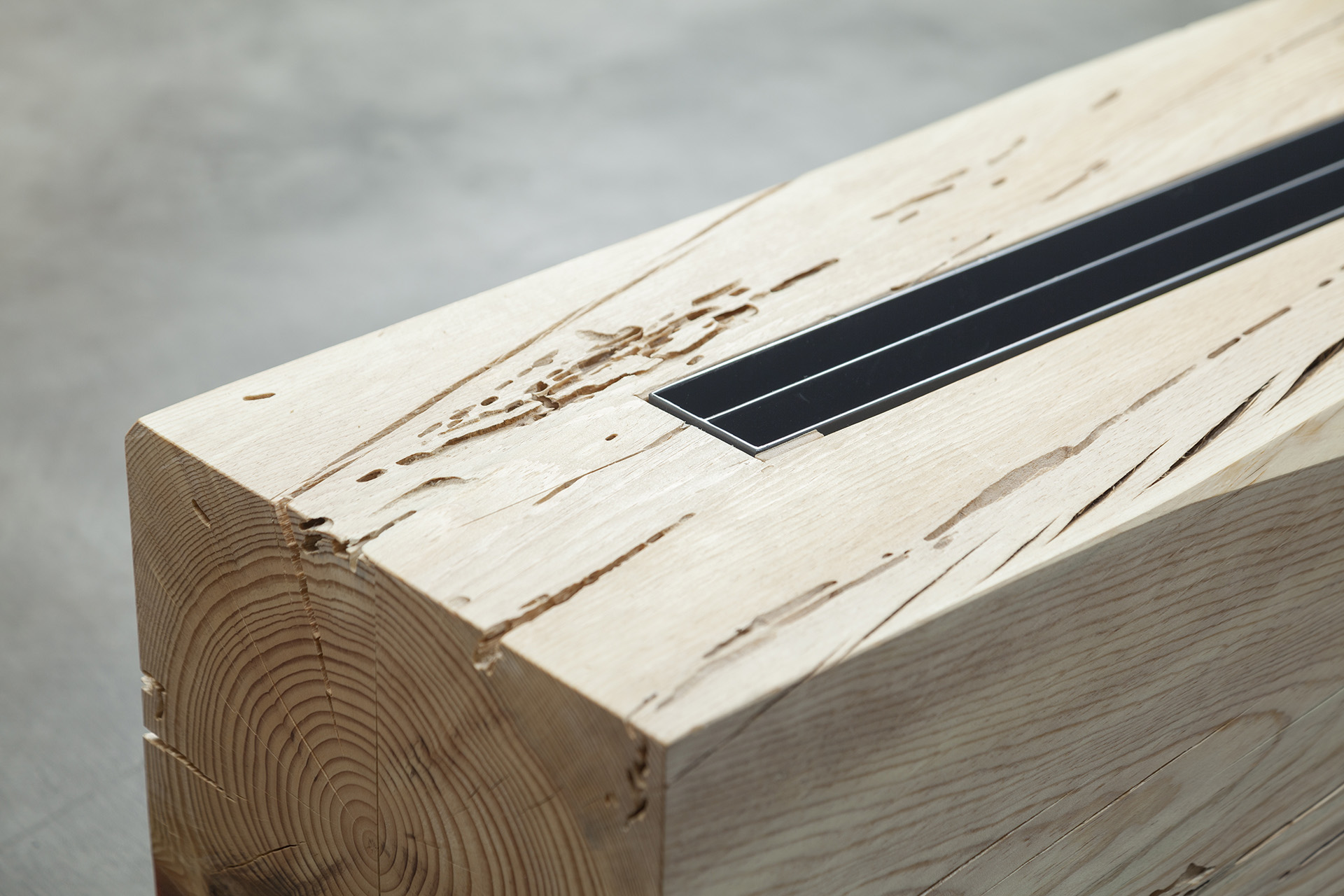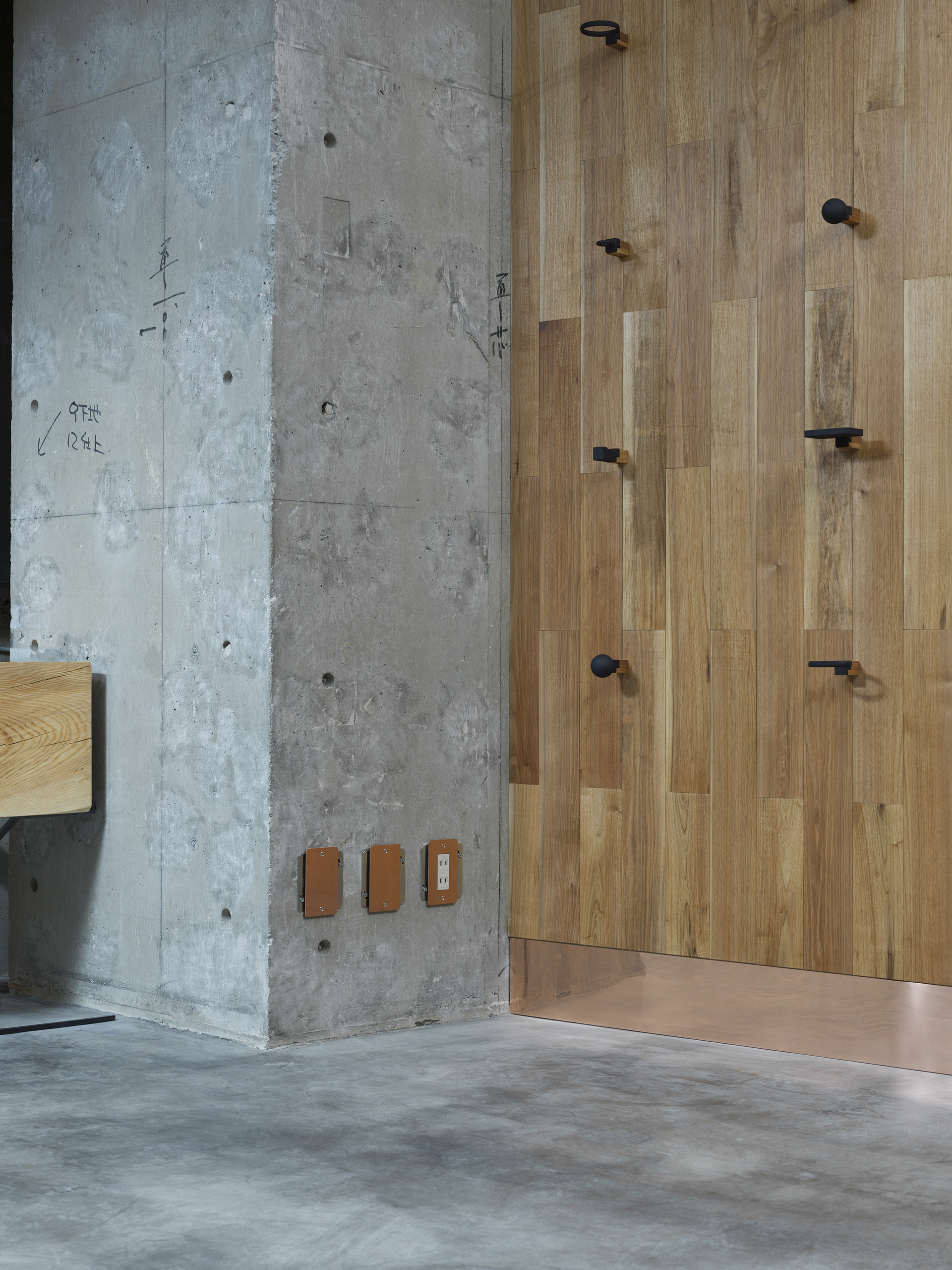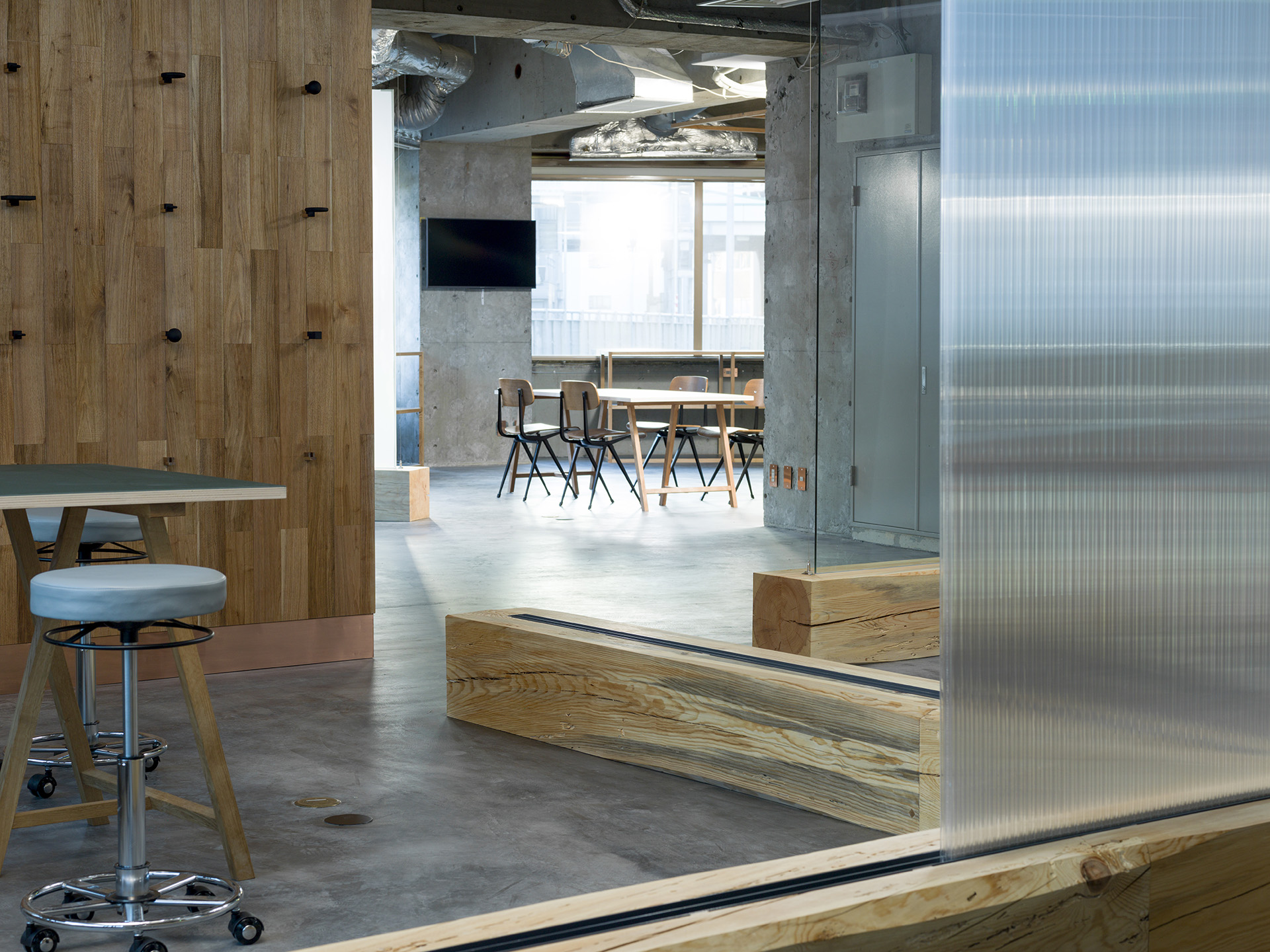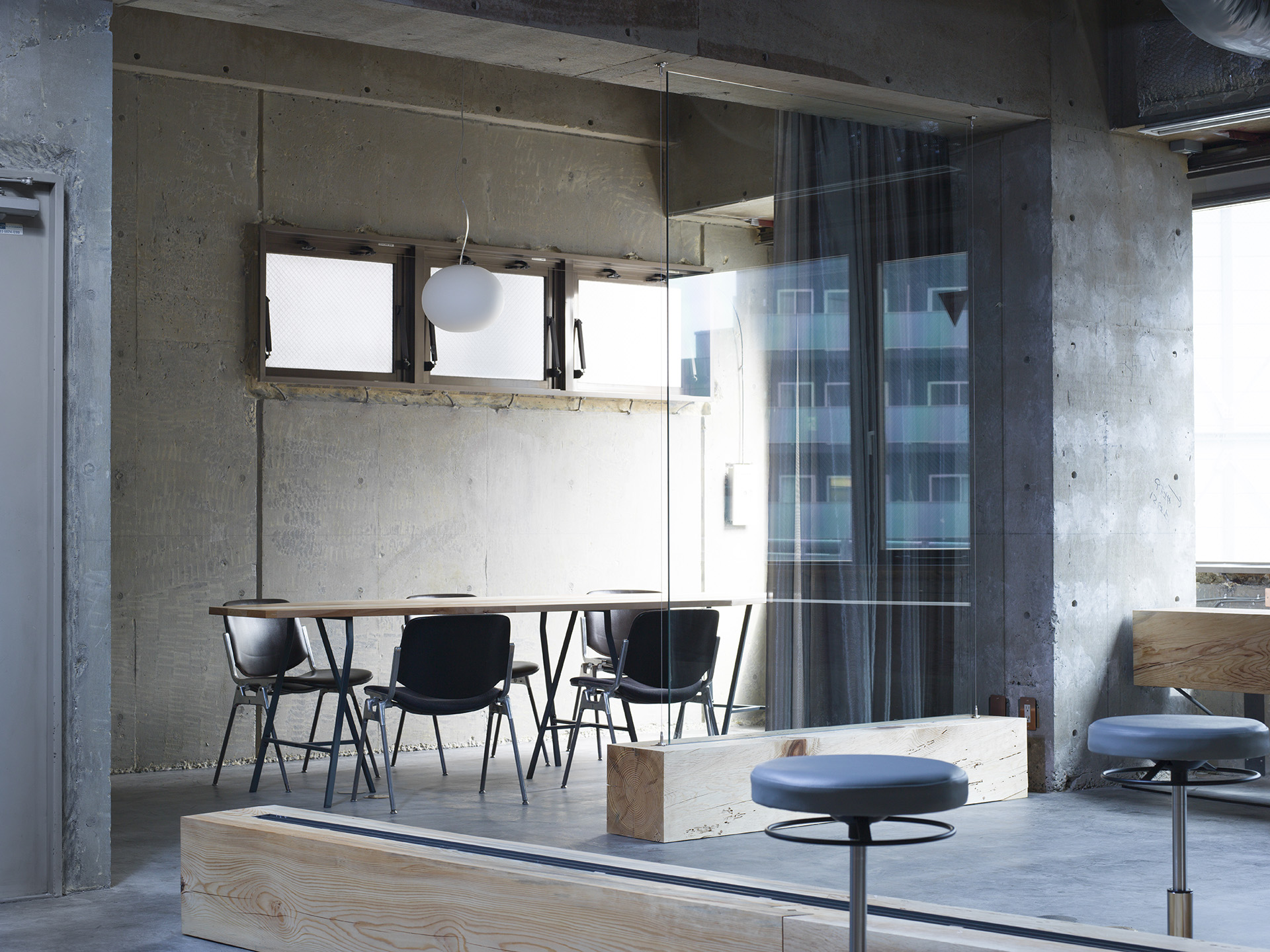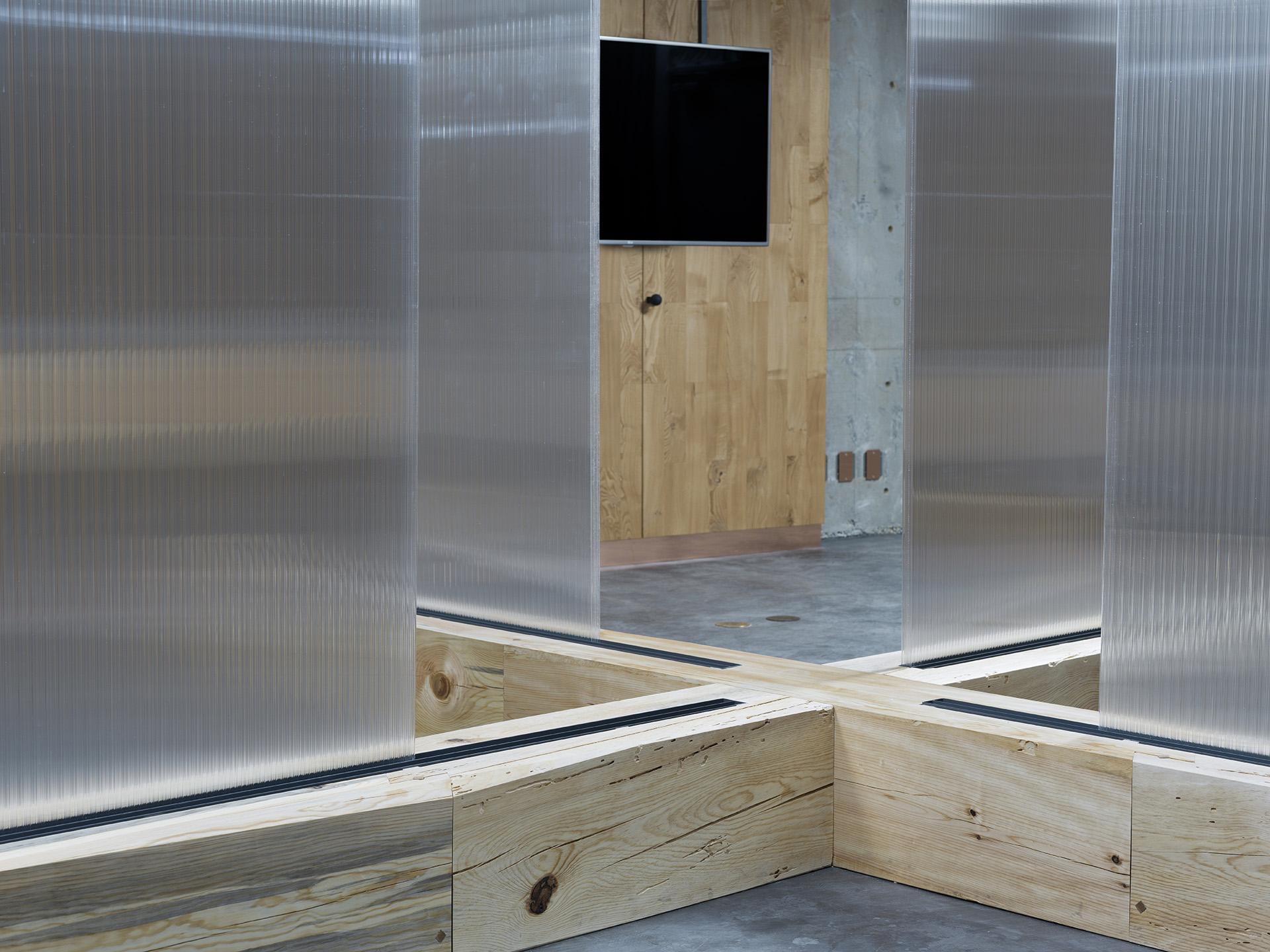- 2016-2017
- Tokyo
- Shibuya
We designed a project space for a creative agency based in Tokyo, Japan. This space was specialized as an area for active brainstorming and discussion, not as an ordinary quiet office space.
The space is located at the same height of a highway that runs next to the window. The high -speed traffic that can be seen from the window gives a perceptual illusion as if we are located on the ground floor.
Like the fast-moving scenery outside, various projects are ongoing inside and this space was planned as an area to accept such complex activities.
The floor includes lab space intended for long-term project and war room intended for many projects to have short, intensive period of discussions. Each space is divided by glass partitions so that each active project can feel each other and is visible at a glance.
The war room is split into 4 small areas with crossed wooden base. Because the number of projects simply outstands the numbers of available space, we proposed an operational system which allows each project to own portable polycarbonate panels. The panels can be slot into the grave on the crossed base to temporarily create its own space and be easily remove once the session is finished. The tables and stools are intentionally made high in order to encourage people to stand up easily and approach the wall to actively participate in their discussions.
From the nature of this place, one can easily imagine that this space will soon be filled with various objects: post-its, markers, tools, fixtures and others. We therefore designed the space to be as bold and simple as possible to appear strong and tolerant against the overflowing objects.
The base for the removable panels, the base for glass partition and the long bench by the window are all made by extraordinarily huge section of pine wood traditionally used as main column of Japanese wooden houses. The appearance of this wood volume is what characterizes the space. Each wood volume is carefully combined with metal fixtures having distinct functions and shows an interesting contrast between the rough wooden existence and delicate details.
Base lighting is composed with seamless line lighting installed inside the corner between beam and slab. The intention here is to let the lighting be integrated to the structure, as any lighting fixture hung from the ceiling would simply become an additional noise to the space.
We selected materials such as wood, copper and linoleum which ages over time and usage. By continually using the space, these materials will feel and become more comfortable with the activities conducted in the space.
During the designing phase, the wall located at the center of the space had no explicit function. It was assumed that its usage would vary and alter over time.
Thus, we proposed a wood joint grid system on the wall: the female side is fixed on the wall, while the male side can be tailor-made with a 3D printer to suit each occasion and flexibly “hack” the wall.
The wood joint employs traditional carpenter’s technique, symbolizing the harmony between delicate handcraft and cutting-edge technology.
The wood joint is a furniture-level example of our major concept for this space: “free to hack,” meaning the design is intentionally left open-end for users to further customize and fulfil their various needs.
Category:Office
Client : Loftwork
Architects:DOMINO ARCHITECTS
Contractor:eckits
Fabrication Manager : hidakuma
Photography:Gottingham

